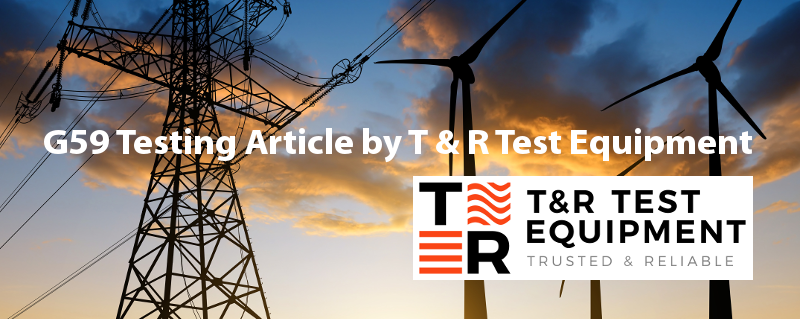bsi. certified to ISO9001, ISO14001, ISO45001 and accredited to ISO17025
bsi. certified to ISO9001, ISO14001, ISO45001 and accredited to ISO17025

G59, (currently G59 issue 3, amendment 4) is the regulation which encompasses the connection of a generator device, running in parallel (synchronised), with the National Grid. The origins of this regulation are in the Ofgem rules for Embedded Generators and it is administered as the ENA Engineering Recommendation G59, Issue 3, Amendment 4 as of July 2018. (NB this regulation is to be superseded by the upcoming G99 regulations)
G59 is relevant for all power generation plants, including: Solar, Wind, Combined heat and power etc. G59 is relevant to any plant which generates over 16A per phase. Where the power generated is below these amounts G83 (G83/2-1) is applicable.
G59 was introduced to protect the National Grid from receiving electricity from generators in a dangerous manner. The regulation is to prevent any generator from sending the electricity onto the Grid without the knowledge and permission of the local electricity authority.
The purpose of the relay in G59 is to prevent potentially deadly situations from occurring where a generator begins feeding electricity into a circuit which has been isolated. The relay will prevent these situations by automatically disconnecting the generator from the mains.
Numerous other aspects are considered by the DNO when assessing the potential connection of the generator to the National Grid. These will typically include:
These tests are normally carried out by an independent contractor but overseen and witnessed by an engineer from the local DNO.
The G59 relay is designed to cause the connected circuit breaker to open if any of the above tests go outside of the programmed limits, for protection purposes.
Since its launch in the mid-1990’s, T&R Test Equipment’s DVS3 Test Set has been the go to instrument for anyone testing to G59 regulations.
DVS3 mk2:

T & R Test Equipment have now launched their new ART3V. As with the DVS3, this is a 3-φ voltage and frequency relay tester but has a higher voltage output.
ART 3V:
